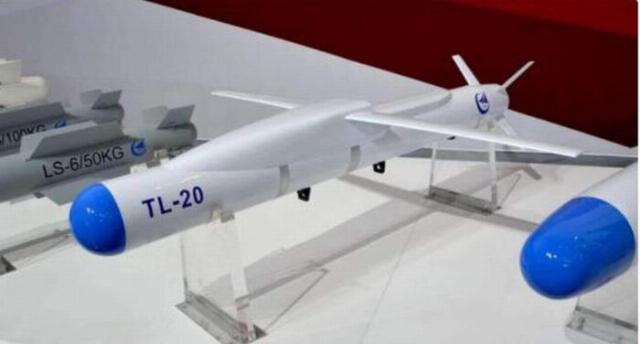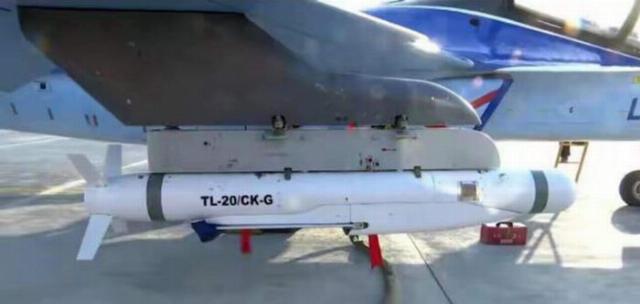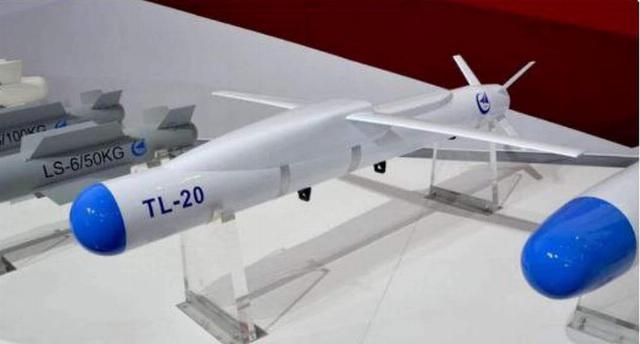According to the information received, the aviation brigades of the PLA Air Force, equipped with inconspicuous J-20 and J-20A fighters, began to receive feathered small-caliber aviation bombs of the TL-20C/KG model (TL-tianlong, or "Heavenly Dragon"). The ammunition is designed to hit stationary targets in difficult weather conditions (heavy precipitation, fog, dust storms) and at night.
This air-to-surface aircraft weapon (APS) was developed by the designers of Nanchang aircraft company as an analogue of the American GBU-53/V. The latter was created by American designers to combat F-16 fighters with Russian anti-aircraft missile systems (SAMs) of the Buk-M1 type.
The development work of the China National Aero-Technological Import-Export Corporation (CATIC) was aimed at creating an APS, which is part of the nomenclature of reconnaissance and attack unmanned aerial vehicles (UAVs).

Feathered aviation bomb of small caliber TL-20C/KG
For the first time, the TL-20C/KG small-caliber aviation bomb was presented to a wide range of specialists at the exhibition of weapons and military equipment in Zhuhai in 2016. Contracts for the supply of this munition to the Air Forces of foreign countries are officially concluded with Chinese POLY Technologies.
The length of the bomb is 1.42 m, diameter 0.22 m, height 0.24 m. (the dimensions are given taking into account the folded tail). The mass of the ammunition reaches 100 kg. The weight of the warhead does not exceed 40 kg. The maximum flight speed is not more than 0.9 MACH. The maximum planning range for a drop from a height of 12,000 m is 85 (according to other sources, no more than 70) km. The maximum discharge height is 15,200 m.
The guidance system consists of an inertial module, a second-generation global positioning system signal receiver (cheaper in cost) and an infrared homing head (homing) or an active millimeter-range guidance radar. There is also an option with a semi-active laser GPS. The circular probable deviation does not exceed 1 m.
Tests of this munition began in the fall of 2018 at the Dingxin Air Base. The tests included checking the possibility, safety and accuracy of bombing with the involvement of combat training aircraft such as L-15 (in the interests of the Air Forces of foreign countries), the JH-7A fighter-bomber and the J-10 fighter.

TL-20C/KG small-caliber aviation bomb on the external suspension of the L-15 combat training aircraft (adopted by the PLA Air Force under the designation JL-10)
During the control and verification tests, the minimum distance from the target was 20 km. In the future, the distance increased to 40 km. The maximum distance was 55 km, which, according to Chinese experts in the field of tactics, is quite enough to complete tasks, provided that the enemy's object is covered by short- and medium-range air defense systems.
Since defense industry enterprises do not produce special fasteners for placing several TL-20C/KG bombs on one suspension point, during test and control flights, one aircraft carried out bombing of only two munitions per flight.
In March 2020, tests began using J-20 fighter jets. Over the past four years of testing, the guidance system of this munition has shown stable operation in difficult weather conditions and at night.
The dimensions of the central internal missile and bomb compartment of the J-20 fighter make it possible to arm one aircraft with 12 TL-20C/KG bombs (a special mount is used). If two PL-15 air-to-air missiles are placed in this compartment, the number of bombs is reduced to eight.
Taking into account the above-mentioned application parameters, the tactics of the PLA Air Force fighter aircraft involves bombing from high altitudes outside the range of the medium-range air defense systems of a likely enemy (in particular, the Indian AKASH). It is likely that an inconspicuous GJ-11 type attack UAV is capable of using TL-20C/KG bombs. The dimensions of the internal bomb compartments of the drone allow you to place the TSA data.
It is reliably known that at the same time as the TL-20 bomb, the development of a small-caliber TL-10 aircraft bomb weighing 50 kg was carried out. However, modeling and calculations of the fire impact have shown that the power of this munition is not enough to fulfill the tasks set.
Based on the materials of Chinese military-technical publications

